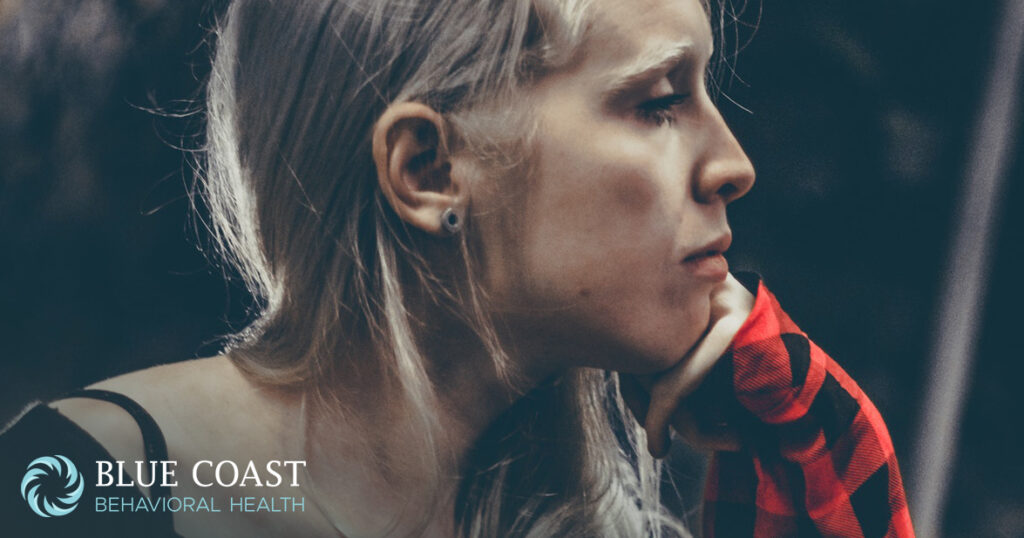Mental illness and substance abuse disorders are intimately intertwined. When an individual suffers from both a drug/alcohol addiction and a behavioral disorder concurrently (for example, a bipolar heroin addict), this is known as dual diagnosis. Having co-occurring disorders complicates both issues because they tend to exacerbate each other.
Being educated about dual diagnosis is crucial when trying to connect with a treatment program. This information helps addiction counselors understand you or your loved one’s individual needs, and what program would work best to address both issues.
1. Understanding Both Disorders
Having a dual diagnosis is tough because both disorders display some of the same symptoms. So how do you know what’s causing what? Here are some common symptoms of each as a starting point:
Substance Abuse
- High tolerance (need more and more to get high/drunk)
- Can’t control use of substances
- Feeling reliant on drug of choice
- Taking dangerous risks
- Drastic behavior changes
- Withdrawing from family and friends
Mental Illness (most common for dual diagnosis):
- Depression mood-related symptoms include: anxiety, apathy, general discontent, guilt, hopelessness, loss of interest or pleasure in activities, mood swings, or sadness
- Dysthymic disorder is a mild, but more long-term and persistent form of depression
- Bipolar displays drastic polarities of mania and depression
There are also, of course, many other co-occurring mental illnesses that can be properly diagnosed by a psychiatrist. Some other symptoms to watch out for are confused thinking, problems concentrating, social isolation, suicidal thoughts (the suicide hotline is always available as a resource), and extreme mood changes.
2. You’re Not Alone—Dual Diagnosis is Very Common
It can feel very isolating to experience dual diagnosis. Oftentimes, sufferers are the only ones they know with co-occurring conditions, so it can feel like there’s no one to turn to for being understood. But according to the National Survey on Drug Use and Health, 9.2 million adults in the Untied States experienced both mental illness and a substance use disorder in 2018. That means individuals with dual diagnosis are not alone.
Rehab programs offer an opportunity to address this issue of isolation. Recovering addicts with mood disorders often meet others who share their struggles in a monitored, therapeutic environment. Feeling seen and understood in this manner can provide comfort and a better hope for the future.
3. Substance Abuse Makes Mental Illness Symptoms Worse
Dual diagnosis often points to the reason sufferers picked up a substance abuse habit to begin with. Self-medication with drugs or alcohol offers a low-hanging solution to the symptoms of mental illness. Unfortunately, in the long run, drugs and alcohol typically make mental health symptoms worse rather than better.
Take anxiety as an example. Masking this uncomfortable feeling with getting high or drunk offers an immediate answer to not having to deal with anxiety symptoms anymore. But lo and behold, as individuals continue to abuse substances to mask anxiety, the consequences of use produce life complications the fuel more anxiety. It becomes an ugly cycle where one disorder becomes more keenly felt while trying to stomp out the other. Dual diagnosis often requires a complete overhaul of behavior.
4. Stress Exacerbates Dual Diagnosis
We’re often quick to write off stress as a normal part of life. We all deal with it after all, right? But each person’s innate ability to cope with stress is different, and that is especially true of people who suffer from dual diagnosis. Stress feeds into both conditions and becomes toxic very easily.
When handling co-occurring disorders, stress management tools become invaluable. These can take many forms such as meditation, exercise, yoga, or a more psychologically direct approaches learned through therapy. Cognitive behavioral therapy is one form that offers these problem-solving skills.
5. Evidence-Based Treatment for Dual Diagnosis is Out There
The best treatment for dual diagnosis is integrated intervention. This takes an individualized approach for each case where the treatment provider considers the unique circumstances and how they affect each disorder. Both issues need to be addressed, not just one or the other.
Although each case of dual diagnosis will have a different treatment plan, the steps below present an effective path for many people managing their conditions:
- Detox: The first step to getting on track is addressing ongoing substance abuse. Inpatient detox has better long term success rates and is much safer than in-home detox (which can be fatal for some cases). During inpatient detox, medical staff monitor the person 24/7 for 7-10 days as they taper off their drug of choice.
- Inpatient Residential: Once a person is safely detoxed, they are ready to start addressing the mental health side of the equation. Inpatient rehabs offer a monitored, therapeutic environment 24/7 where individuals can participate in therapy, support, medication, and other health services to treat their addiction.
- Outpatient & Ongoing Therapy: Recovery doesn’t stop when a person leaves their treatment facility. It’s a lifelong process that requires maintenance and self-accountability. Outpatient programs provide the structure and support necessary to get this process started outside of an inpatient environment.
- Psychiatric Medication: Many mood disorders can be treated through medication. This should be addressed in addiction treatment programs if the individual brings up their symptoms with a psychiatrist.
- Support Groups: Peer-run groups like Alcoholics Anonymous and Narcotics Anonymous offer invaluable fellowship for people in recovery.




